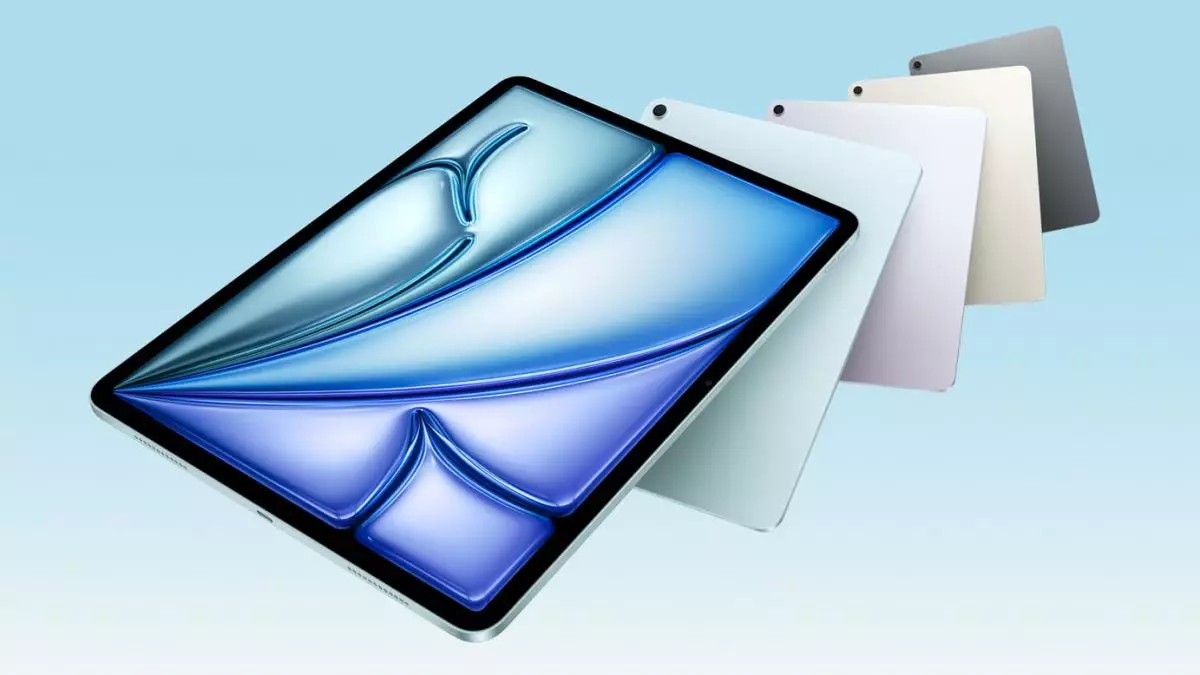Apple has once again set the stage for innovation with the release of its latest iPad Air models, now powered by the highly anticipated M3 chip. This advancement reflects Apple’s ongoing commitment to enhancing user experiences through cutting-edge technology and seamless performance. The new 11-inch and 13-inch iPad Air variants are not merely upgrades; they represent a notable leap forward, making them an enticing choice for tech enthusiasts, students, and professionals alike.
Starting at $599 for the 11-inch model and $799 for the 13-inch version, the new iPads offer a premium experience without veering into prohibitively expensive territory. With four appealing colors—blue, purple, starlight, and space gray—users can select a model that suits their personality and style. Apple has recognized the importance of storage, providing configurations that span from 128GB to a staggering 1TB, ensuring that users have plenty of space for apps, documents, and creative projects.
One of the standout features of the new iPad Air is its performance metrics. Apple claims the M3 chip performs nearly twice as fast as its predecessor, the M1 chip, and shows an impressive 3.5x increase in speed compared to the A14 Bionic chip. While it is evident that improvement is the central theme here, it’s important to note the absence of a direct comparison with the M2-powered iPad Air released last year. This raises questions about the M2’s performance, making one wonder if it truly stands up against the latest advancements.
Nonetheless, comparing it to older models gives potential buyers a sense of how far the iPad has come. The M3 chip not only elevates CPU and GPU performance, boasting a 9-core GPU that ensures a 40% increase in graphics capability, but it also enriches the user experience in tasks that leverage artificial intelligence. The Neural Engine is reportedly up to 60% faster in executing AI-based workloads than the M1 chip, allowing for smoother operations in various applications ranging from editing videos to complex data analysis.
Apple has also launched an updated Magic Keyboard, designed to complement the iPad Air’s capabilities. With a larger trackpad and a new 14-key function row, tasks like adjusting screen brightness and volume become less cumbersome, offering users a more refined experience. The keyboard’s magnetic attachment and Smart Connector ensure that the connection is both effortless and reliable, eliminating the need for Bluetooth pairing—a welcome feature for anyone who values efficiency.
However, the price point of the new Magic Keyboard cannot be overlooked. Starting at $269 for the 11-inch model and $319 for the 13-inch version, the cost may deter budget-conscious consumers. While the quality of Apple’s accessories is generally top-notch, it leads to a discussion about whether the investment in the keyboard justifies its price when compared to third-party alternatives that offer similar functionality.
Bob Borchers, Apple’s VP of Worldwide Product Marketing, summed it up best: “For everyone from college students taking notes with Apple Pencil Pro, to travelers and content creators who need powerful productivity on the go, iPad Air with M3, Apple Intelligence, and the new Magic Keyboard take versatility and value to the next level.” His statement encapsulates the core appeal of the new iPad Air. It aspires to be more than just a device; it seeks to be an indispensable tool that adapts to various user needs.
However, it’s essential for potential buyers to consider their specific use cases. The performance enhancements may be significantly evident for heavy-duty tasks like video editing and graphic design. Still, casual users might find the updates less groundbreaking in their day-to-day operations. Therefore, making an informed choice based on individual requirements is crucial.
The leap in models like the iPad Air with the M3 chip indicates a growing nexus between power, performance, and practicality in consumer technology. While Apple continues to captivate the market, consumers are encouraged to weigh the benefits of features against their actual needs, paving the way for more personalized tech journeys.

